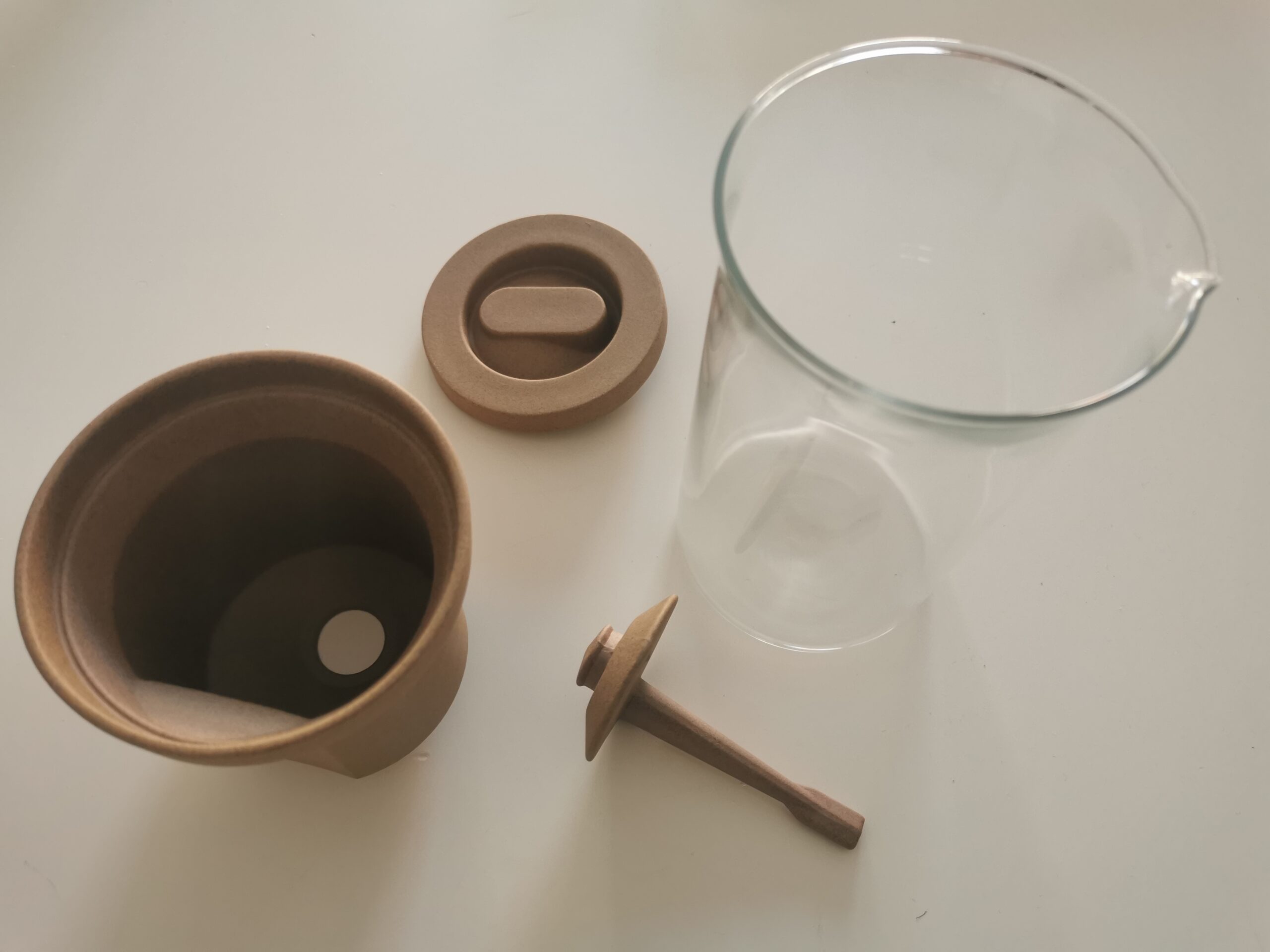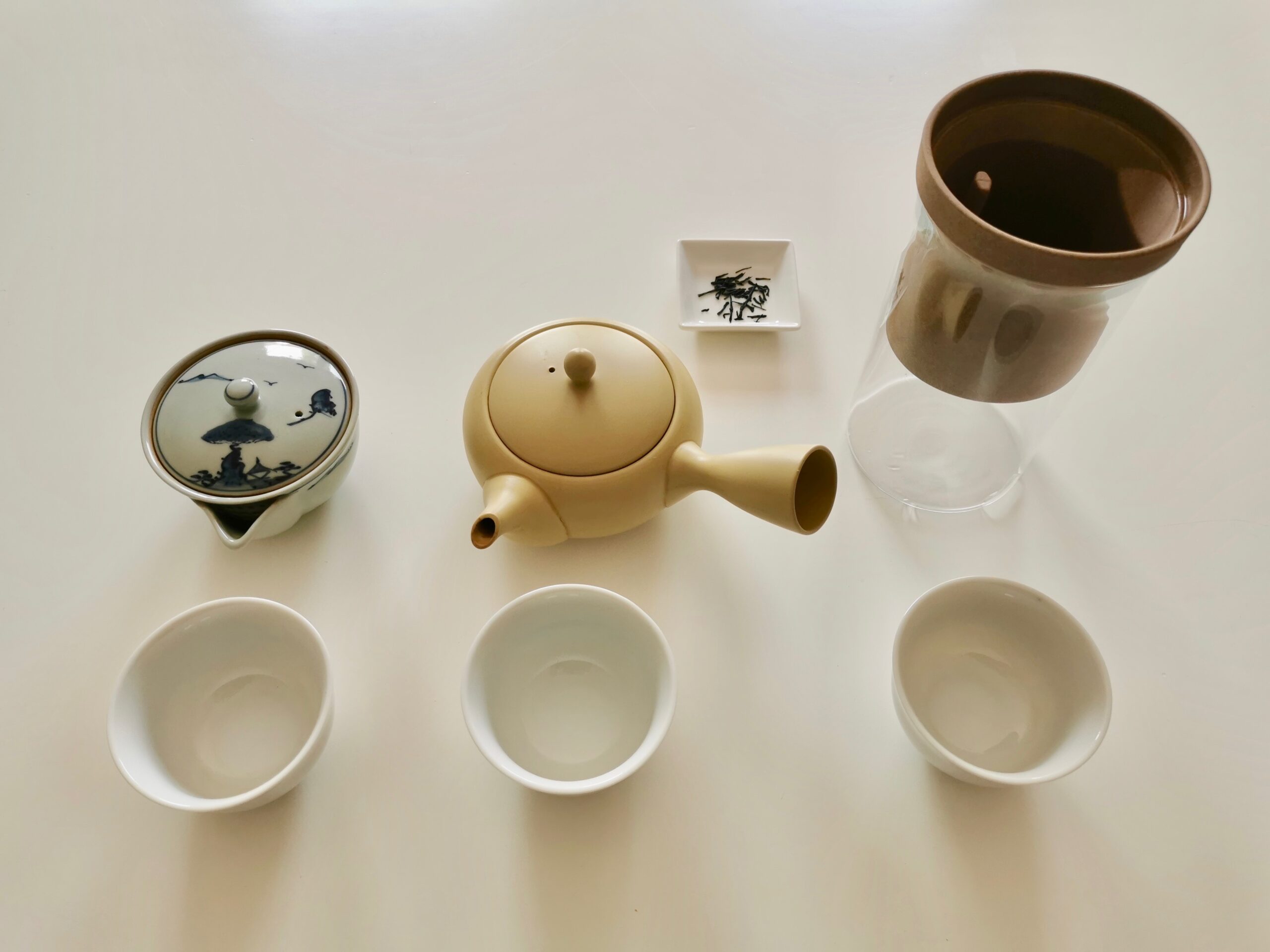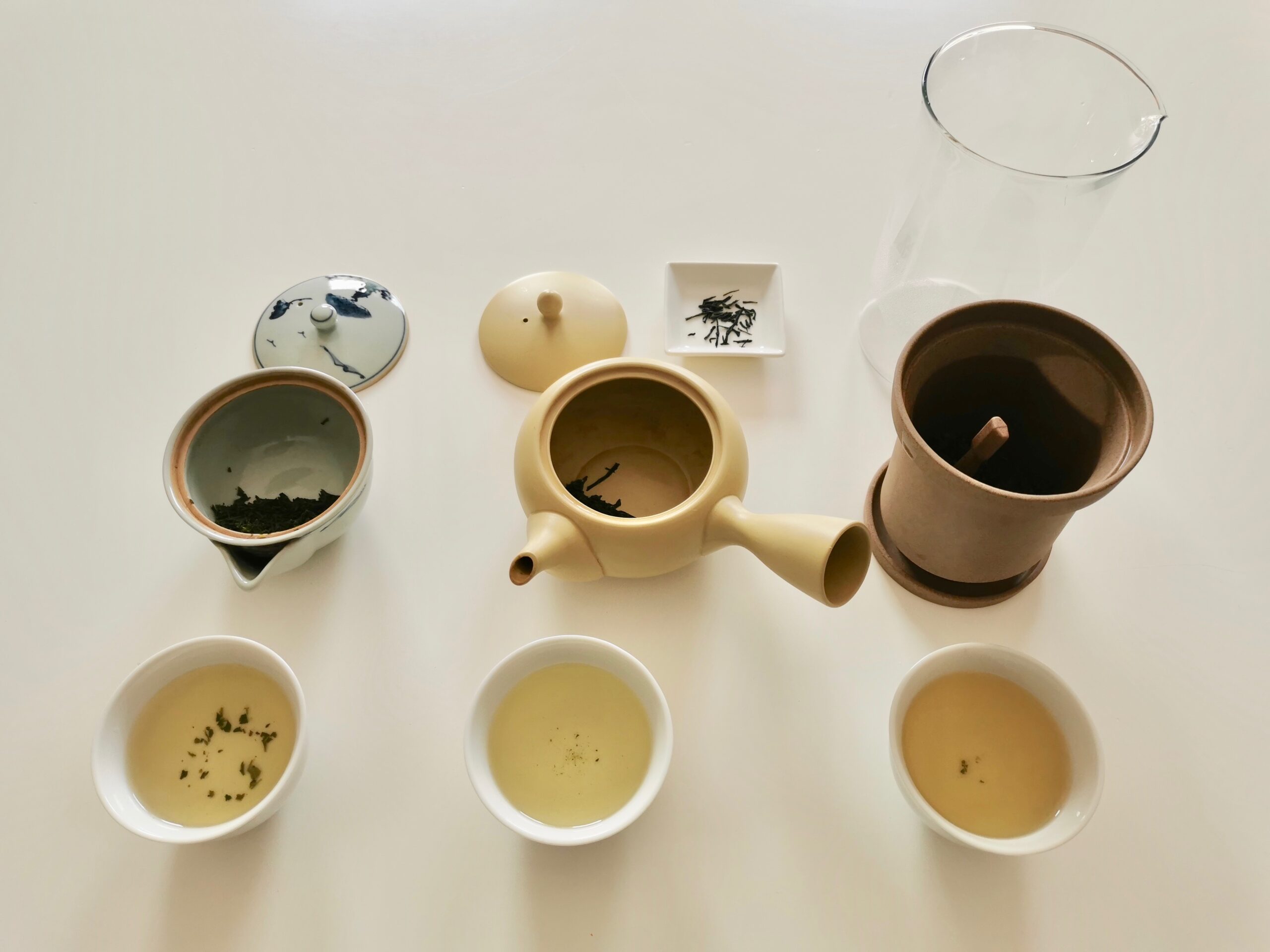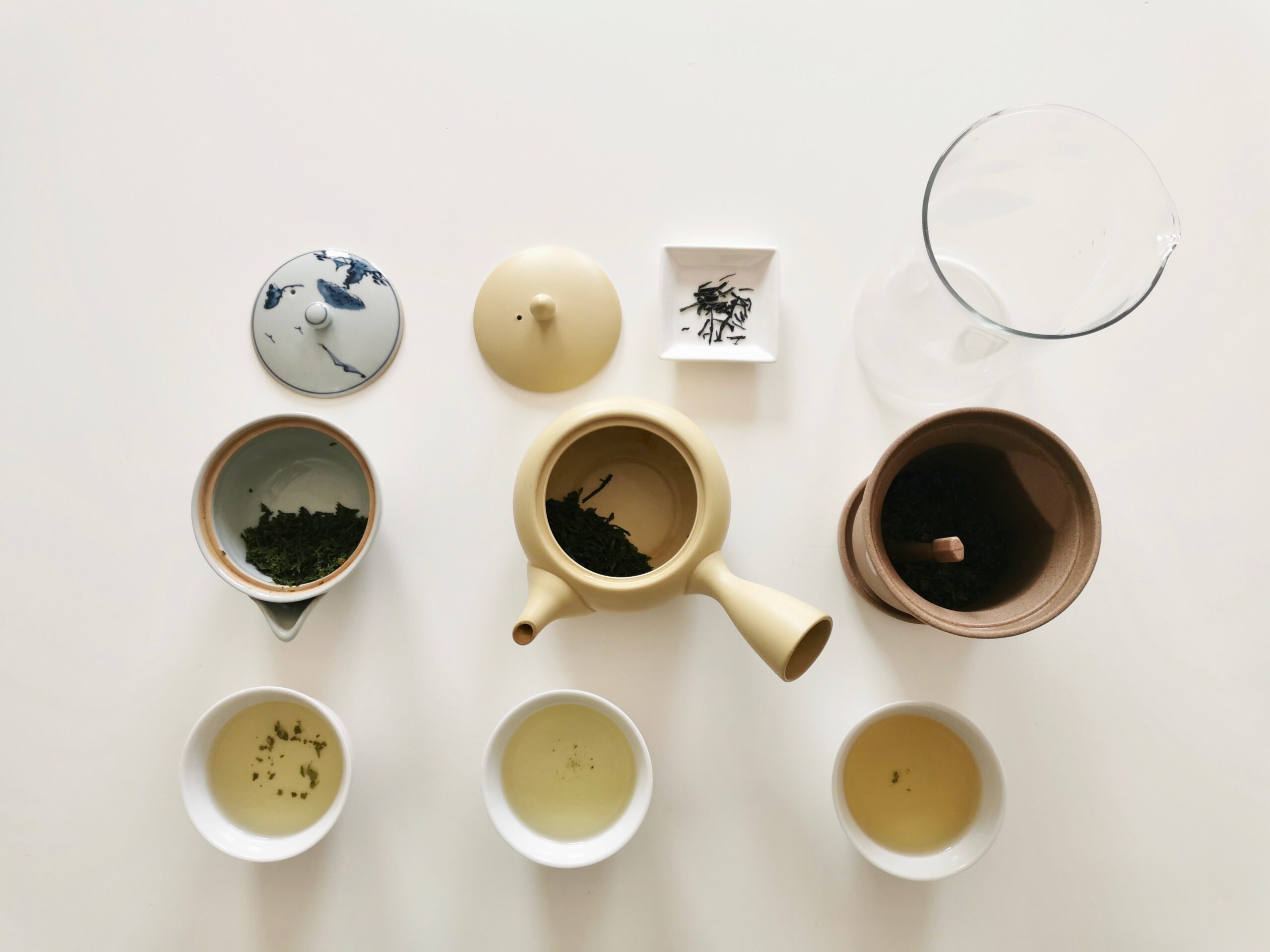Very often we are posed with the question: are there any new – more modern – ways of brewing tea in Japan? Today we would like to talk about one of those: drip tea brewing. And, more specifically, about a new device for it – Tokine (刻音).
Tokine is a new modern tea utensil that consist of 4 different parts: a glass pitcher and 3 semi porcelain pieces that serve as a container for the tea leaves. The tea leaves are placed in the container and when water is poured, the extraction is slow. Moreover, the leaves do not move around, instead they tend to fall to the bottom and stay there: apparently this also helps to have a good extraction of the flavours into the brew. The creators call this the “precipitation extraction method”.


It took two years and more than 500 prototypes to develop this unique tea utensil. The initial inspiration came from Yoshimura Co. while the product was designed by Takeshi Ishiguro and Shoji Ito. The potter who agreed to engage in this project and made the product a reality is Yoshiyuki Nakao from Nakazen. The idea behind the Tokine was to create a brand new tea utensil that fits into a modern lifestyle with the hope of restoring the habit of loose leaf tea drinking in Japan and attracting more people to like Japanese teas.
We were very kindly provided with a Tokine by our friends and tea connoisseurs Yiling and Patrick of Nari Tea, who very excitedly explained the good results they got using this tea brewing method. To test it for the first time, I decided to do a proper tea tasting comparison. I chose a very high quality traditional sencha, from one of our collaborator tea farms, Hosoi Nouen in Wazuka. We really love this tea. To make it interesting but also as accurate as possible, I brewed three batches of tea – one with each different teaware: a porcelain houhin, a Tokoname kuysu and the Tokine.

I tried to be as exact as possible with the brewing: the houhin and the kyusu had the exact same parameters. For the Tokine, I followed the instructions for the optimal brew – while keeping the same water temperature and steeping time. I used 3 grams of sencha and 80 mililiters of soft water for each tea utensil; water temperature of 80ºC and, for the first brew, steeping time of 30 seconds in the houhin and kyusu. For the Tokine, the developers recommended pouring a tiny amount of water first to wet the tea leaves and wait for 30 seconds – after which, pouring the rest of the water and wait for another 30 seconds. The steeping method of the Tokine is essentially dripping, but, in contrast to other dripping devices, it does not have a so called filter. Instead, the leaves function as a sort of filter covering the small passage for the water. The brew is slow as the tea drips down into the glass pitcher. Once the 30 seconds have passed, it is suggested to slightly move the stick inside, so that it opens the space for any last drops of tea to be poured out.

This tasting comparison resulted in some interesting findings. The wet leaf aroma and appearance were quite the same in all the tea utensils. The colour of the liquor was the clearest from the kyusu, with a slightly greener hue; the one from the houhin was more yellow and the one from the Tokine, an even darker yellow. Regarding the taste profile, the kuysu gave a very mellow and light brew. The brew of Tokine was quite similar, but slightly more decisive. Surprisingly the most astringent brew came from the porcelain houhin. The texture was also quite similar in both kyusu and Tokine, giving a creamy at first but very light sensation in the mouth. Finally, the aftertaste was very pleasant and balanced in both kuysu and Tokine (even if with slightly different nuances). In contrast, astringency kept its presence strong in the houhin’s brew. I did a second brew keeping the same water temperature, but steeping for a shorter time and the result again was of a prominent astringency from the houhin. This time, the kyusu gave some slightly bitter notes, while the Tokine had a good balance.
A few days apart, I also used Tokine to brew a gyokuro from Yoshida Meichaen in Uji that we often use for our courses. The umami was prominent but very balanced. This was to confirm my conclusion of the tea tasting experiment: eventually, Tokine is indeed a good brewing utensil, quite comparable to a good quality Tokoname kyusu. It looks modern and clean with a cool design. It has no metal parts and is made of semi porcelain, keeping it natural. Plus the glass pitcher also makes it neutral. Last but not least, it can be cleaned quite easily.
Will this be a revolutionary tea utensil able to attract new audiences? We cannot tell. But despite our personal preference for teapots, we love seeing new ideas developed with so much care and dedication. We hope that this can attract new people into the world of Japanese tea.

